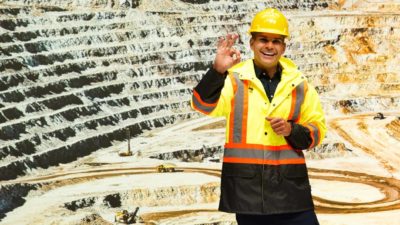The Australian dollar firmed after the Reserve Bank of Australia decided against cutting the official cash rate this afternoon.
The Aussie battler inched up from US69.8 cents to US69.92 cents, while the S&P/ASX 200 (Index:^AXJO) (ASX:XJO) index barely reacted.
The RBA left the cash rate at a record low of 1% despite the ongoing market turmoil as the rift between the US and China widened this week and triggered a sharp sell-off in global equity markets.
I can understand why our central bankers were reluctant to move after they made two back-to-back cuts at their last meetings. They will want to step back for a while to see where the chips fall before moving again.
You can bank on more cuts
But the Aussie is likely to come under pressure again soon, in my view, as the RBA has not only left the door open to further rate cuts but have tacitly suggested the need for more stimulus.
The bank's governor, Philip Lowe, acknowledged the "increased uncertainty generated by the trade and technology disputes" at the top of his obligatory statement on the monetary policy decision as he lowered growth and inflation expectations.
Our central bank expects GDP growth of 2.5% in 2019 and 2.75% in 2020. Previously, it was tipping growth of 2.75% for both years.
It also now says that inflation will take longer to return back to 2% than previous expected. The inflation rate came in at 1.6% in the June quarter.
Jobs forecasts support need for more stimulus
The all-important employment market is also supporting the need for further cuts and it's no secret that the central bank wants the rate to fall to 4.5%. The RBA said its rate decisions are primarily driven by labour market indicators.
"The unemployment rate is expected to decline over the next couple of years to around 5 per cent. Wages growth remains subdued and there is little upward pressure at present, with strong labour demand being met by more supply," said Dr Lowe.
"Taken together, recent labour market outcomes suggest that the Australian economy can sustain lower rates of unemployment and underemployment."
Silver-lining? What silver-lining?
The RBA did point to some positives though. It said that the "outlook for the global economy remains reasonable" – although that comment seems out of place given global developments in the last 48 hours.
It also did point out that China is taking steps to support its economy, other central banks are cutting rates to stimulate growth, and that a number of factors like infrastructure spending and the stabilising housing market will see conditions improve from here.
However, I don't think these positives will be enough to lift sentiment of investors of the general public if the ongoing trade war drags on longer than expected.
From the looks of the latest developments, this dour outcome is almost a certainty.
I say bring on the rate cuts!








